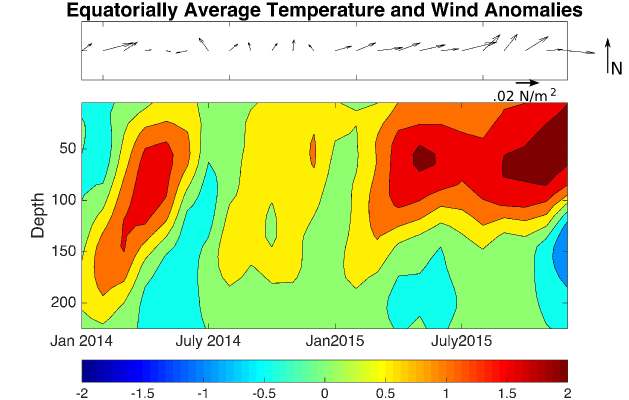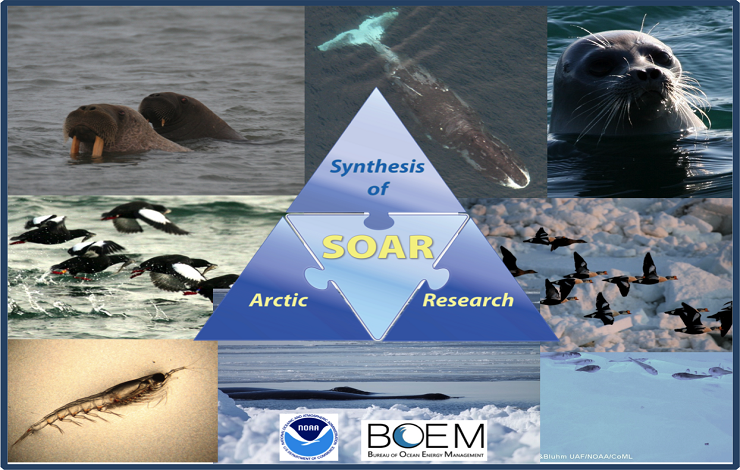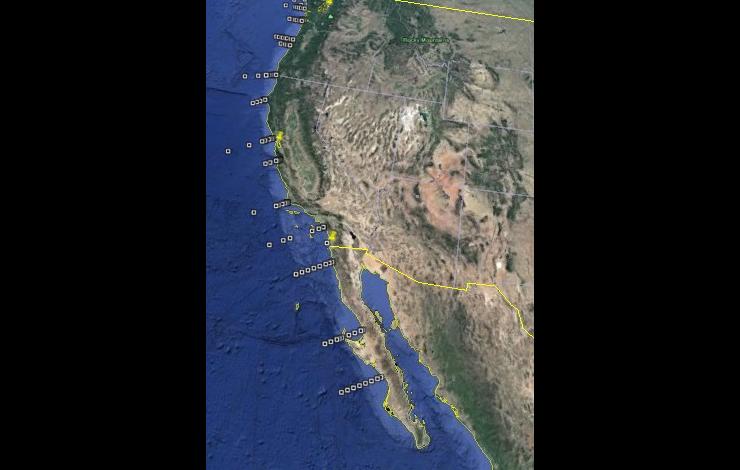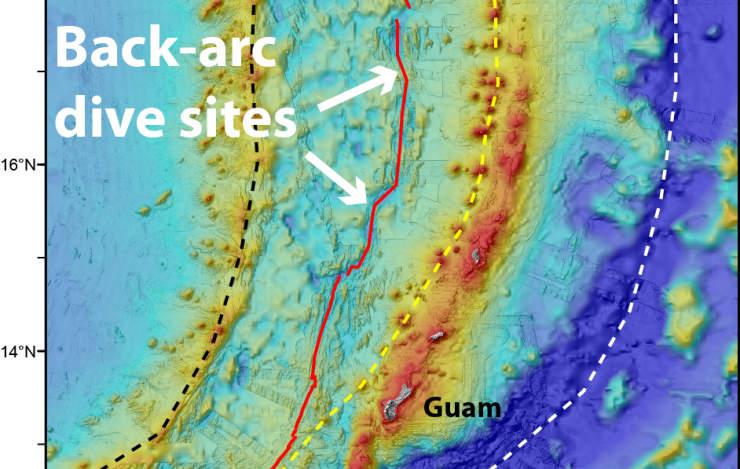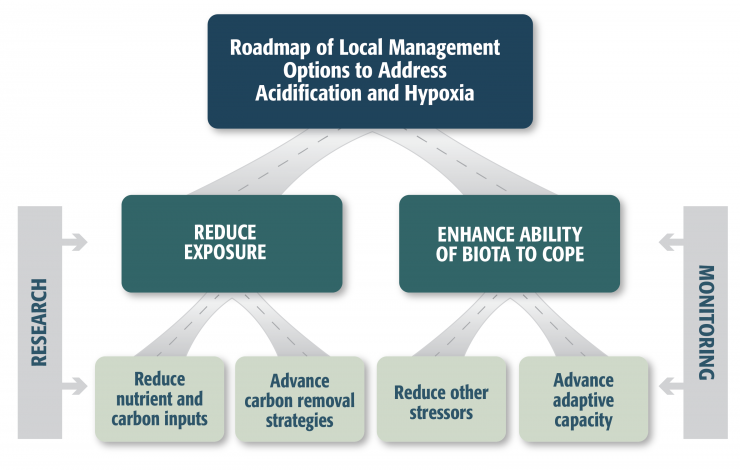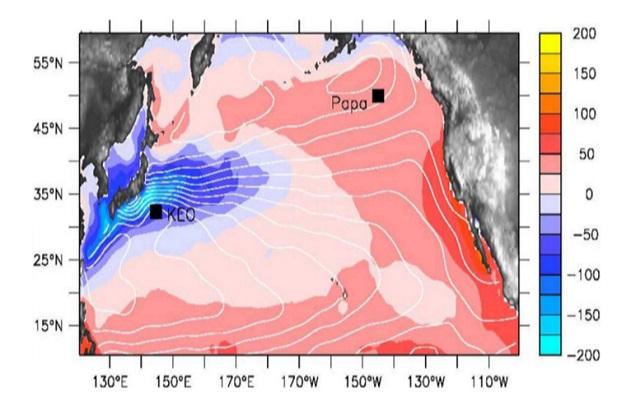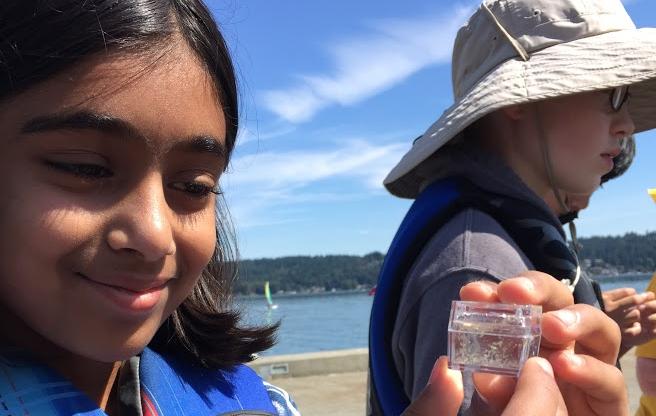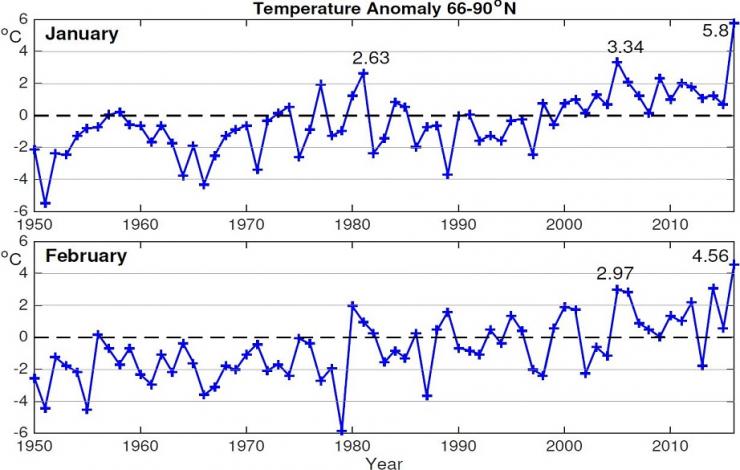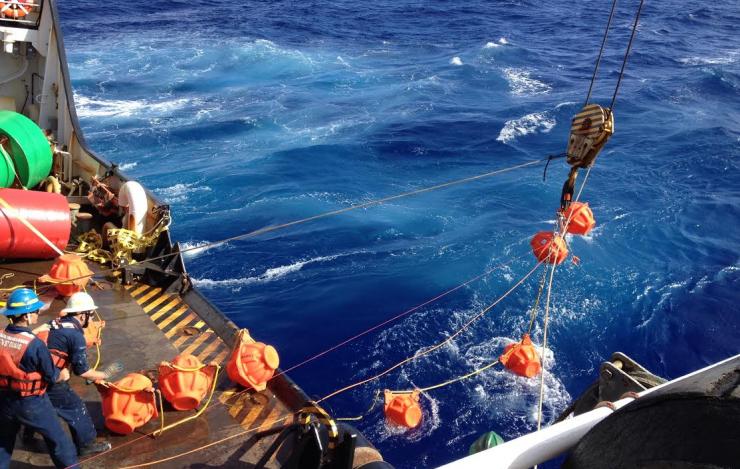What's New Archive
PMEL climate scientists describe in a recently published paper the relationship between the 2014-15 failed El Niño and this year’s monster El Niño as well as any similarities between the past strong El Niño’s. They examined changes in sea surface and sub-surface temperatures, winds, and volumes of warm water in the Pacific Ocean from 2014 to 2016.
What they found was that the highly anticipated 2014-15 El Niño event failed due to unusually strong easterly winds in the summer of 2014 which prevented the warm surface water from shifting eastward as seen in a typical El Niño events and left a reservoir of warm water below the ocean’s surface. This reservoir of warm water combined with strong westerly winds that appeared and continued throughout the spring and summer of 2015 led to the monster El Niño. They found a similar series of events that led to the 1991-92 El Nino event.
Learn more about El Nino Research and read AGU’s press release on the paper.
The Synthesis of Arctic Research (SOAR) project published an update on May 9, 2016 that highlights how the Pacific Arctic’s new normal conditions are affecting a variety of marine life. SOAR is 6-year interdisciplinary effort led by PMEL and Fisheries scientists that provides a synthetic view of recent changes in the Pacific Arctic marine ecosystem. These recent changes include longer open-water periods during the summer, fewer days of sea ice cover, reduced sea ice thickness, increased growing season of marine algae and lower pH. A second Special Issue is currently underway and builds on themes and new understanding described in the first Special Issue that featured 17 papers from over 100 contributors.
Through collaboration and synthesis, SOAR is increasing scientific understanding of the complex relationships among oceanographic conditions (physics, chemistry, sea ice), and species in various levels of the food web (from zooplankton and forage fish to seabirds and marine mammals), in the rapidly changing Pacific Arctic marine ecosystem.
Read the project update on Eos, the news arm of the American Geophysical Union.
PMEL scientists are leading the most integrated research cruise that launches May 5th from San Diego. The research cruise takes place every couple years and allows NOAA to create a unique time series of carbon measurements in areas expected to be highly impacted by ocean acidification. Some 36 scientists from the United States, Mexico, Canada and Europe will be aboard the NOAA Ship Ronald H. Brown throughout the month long cruise to get a better understanding of changing ocean conditions and biological responses.
Scientists from NOAA’s Northwest Fisheries Science Center and the Romberg Tiburon Center will study how ocean acidification contributes to harmful algal blooms. For the first time on this expedition, NOAA is collaborating with the Department of Interior’s National Park Service who will assist in collecting on-shore samples at three different parks: Cabrillo National Monument, Channel Islands National Park, and Olympic National Park. PMEL has continued to partner with the West Coast National Marine Sanctuaries to also collect on shore samples. Sampling on-shore while the ship is nearby will allow scientists to understand the relationship between nearshore and offshore conditions.
Follow along with the expedition through the cruise’s blog. To read more visit NOAA.gov and the Carbon program's page.
PMEL scientists from the Earth-Ocean Interactions Program will be remotely joining the NOAA Ship Okeanos Explorer on its deep-water exploration of the Mariana region via “telepresence” from Newport, OR and Seattle, WA. PMEL will lead three remotely operated vehicle (ROV) dives tentatively scheduled for this weekend. These dives will explore three hydrothermal vent sites that were recently discovered on an R/V Falkor research cruise conducted in fall 2015. This region is home to the deepest parts of the ocean, the Mariana Trench, and hydrothermal vents with unique marine ecosystems in diverse geologic settings.
The main goal of the expedition is to collect baseline information of unknown and poorly known areas in and around the Mariana region to support science and management needs, and to understand the diversity and distribution of deep-water habitats. The expedition continues through July 10.
Follow along live and learn more about the cruise on the NOAA Ocean Exploration Program web site.
PMEL Senior Scientist, Dr. Richard Feely, served on a panel with other expert scientists to help west coast decision-makers manage and adapt to changing environmental conditions. Ocean acidification and hypoxia, low dissolved oxygen, are two coastal ocean phenomena that threaten the health of marine ecosystems and marine organisms. Each can also have profound impacts on coastal economies and culturally important resources, such as fish and shellfish. The US West Coast and British Columbia will face some of the earliest, most severe impacts and expansion of hypoxic zones, due to climate change, and the acidification of ocean waters resulting due to the absorption of human-derived carbon dioxide emissions.
The connection between these two phenomena is addressed in the Science Panel’s report released April 4th. The report summarizes the latest scientific literature and presents management options to reduce stresses on marine ecosystems and enhance the ability of organisms to cope with changing conditions. Leaders in coastal regions can use this as a model on how to develop science-based strategies for reducing the threat of changing ocean conditions.
For more information, read the Panel's press release, the report and NOAA web story.
Members of the PMEL Ocean Climate Stations Project (OCS) and Carbon Program recently published two companion papers describing ocean processes in the North Pacific that play a role in the Earth’s climate system. Dr. Meghan Cronin and her co-authors examined the exchanges of heat and salt affecting the mixed water layer of the upper ocean, which can have an effect on weather and climate. Using data from the OCS KEO and Station Papa moorings, plus satellites, Argo floats, and a glider, the authors closed the heat budgets at KEO and Papa, and also closed the salt budget at Papa. Their results suggested a diffusivity coefficient could help close the mixed layer budgets of other ocean properties. Building on these results, Dr. Andrea Fassbender and her co-authors used this coefficient to close the carbon budget at Station Papa, providing new insights about the carbon cycle and climate responses in this region.
Read the article in Journal of Geophysical Research Oceans, and visit the OCS site.
Registration for 2016 NOAA Science Camp is now open! NOAA Science Camp is held at the NOAA Campus in Seattle, WA and introduces both middle and high school students to the diverse range of careers and research conducted by our scientists. Three programs are offered: Middle School Science Camp, High School Junior Leadership Program and new this year, a Remotely Operated Vehicle Mini Session. PMEL scientists (NOAA and JISAO) lead activities relating to engineering and oceanography including what scientists do when they go to sea, how scientists work with engineers to solve complex marine questions, how currents and trace chemicals move throughout the ocean, and even how buoys help predict large-scale climate events such as Tsunamis. The camps will run at various times from July 11-26.
Learn more on the Washington Sea Grant site and register for NOAA Science Camp here.
Right from the beginning of 2016 new records have been set in the Arctic: warmest air temperature on record in both January and February, and the lowest sea ice cover in February. The average temperature anomaly has reached a record of 5.8°C (10.4°F) for January and 4.56°C (8.2°F) for February. This is the warmest period in the Arctic for these two consecutive months since 1948. The Arctic sea ice extent for February 2016 averaged 14.2 million square kilometers (5.5 million square miles), the lowest February extent in the satellite record. Once Arctic scientists at PMEL put this past January and February into historical perspective, they saw that this unusual warmth is unprecedented in both months. This unprecedented warmth is mainly due to the large positive temperature anomalies in the Arctic Ocean and over the North American continents. This year’s record high temperature and low sea ice cover increases concerns about what will happen next in the Arctic and globally.
Read the full story on NOAA Arctic theme page.
PMEL scientists have analyzed the recordings collected from a successful deployment of a deep-ocean hydrophone mooring in Challenger Deep in the Mariana Trench. The Challenger Deep is the deepest known location in Earth's oceans, about 36,000 feet (10,971 meters) beneath the ocean surface. It is located in the Pacific Ocean near Guam. The recordings captured a baleen whale’s call, a magnitude 5.0 earthquake, an overhead typhoon and ship traffic noise. PMEL, in collaboration with the crew of the Coast Guard Cutter Sequoia and with funding from NOAA’s Office of Ocean Exploration and Research, deployed the hydrophone on January 17, 2015 for 22 days. The purpose of the project was to establish a baseline for noise in the deepest part of the Pacific Ocean.
For more information, visit the NOAA PMEL Acoustics Group and read the press release from NOAA.
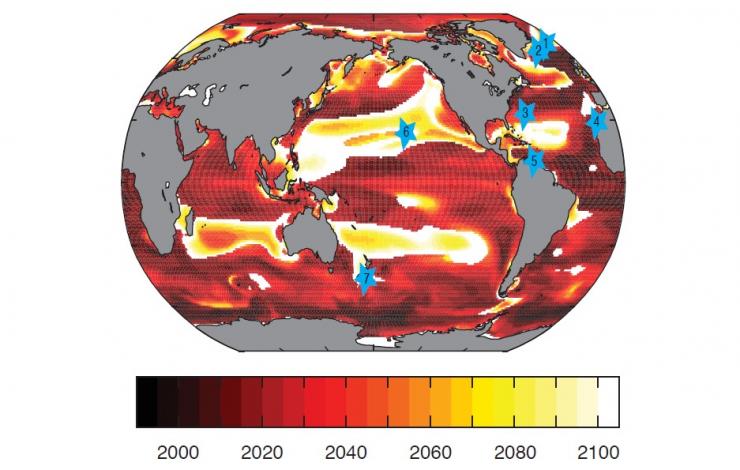
This map shows the timeframe (year) in which the anthropogenic trend becomes distinguishable from internal climate variability. The darker red indicates earlier emergence of the trend while the orange/white areas show emergence later on. The blue stars indicate current ocean carbon sampling locations.
The ocean absorbs a significant fraction, about 40%, of carbon released by fossil fuel burning, thereby reducing climate warming. However, natural climate variability makes it difficult to directly observe trends in the amount of anthropogenic carbon the ocean is taking up with time. PMEL scientist and collaborators utilized a modeling approach to separate out the ocean carbon trend due to man-made carbon emissions from this variability. This separation illustrates the timeframe over which we may expect to observe human driven change in carbon uptake in different ocean regions. The results show that these trends are largely not detectable at present, but may begin to emerge in certain regions between 2020-2050. The Southern Ocean and Atlantic region are projected to show this uptake first, while the latest emergence occurs in the Pacific and Indian subtropical regions.
For more information, read the article in Nature, along with Nature's News and Views, a press release from the University of Wisconsin and visit the NOAA PMEL Arctic project webpage.



